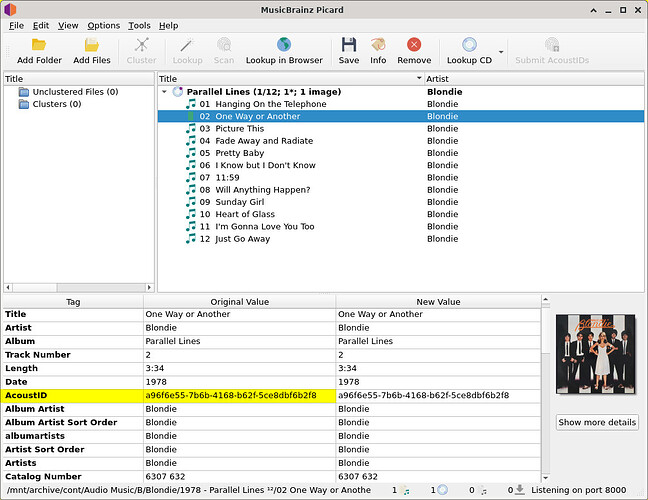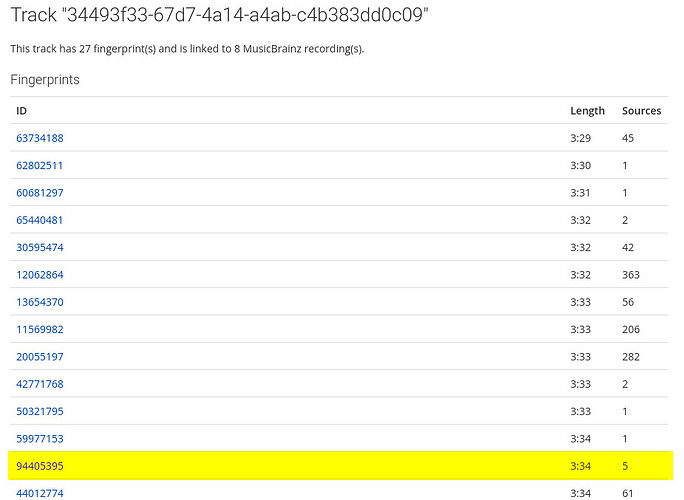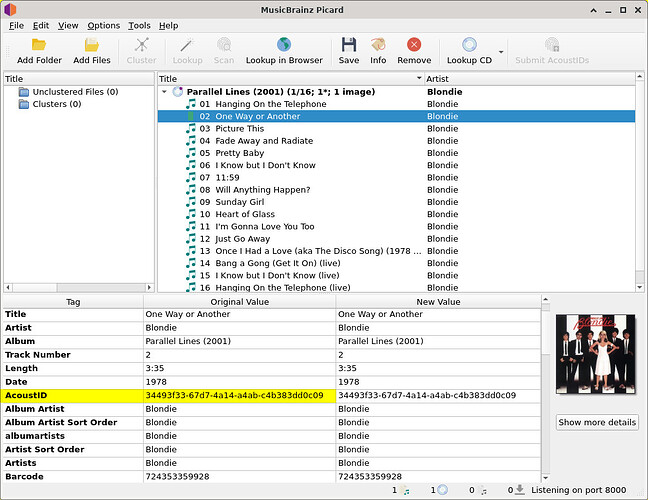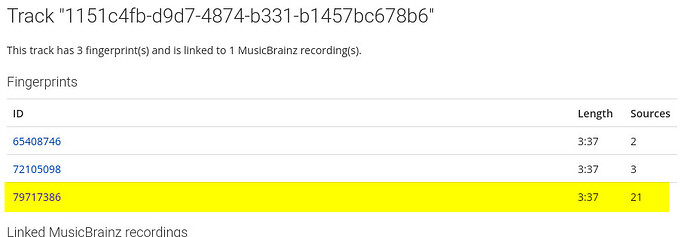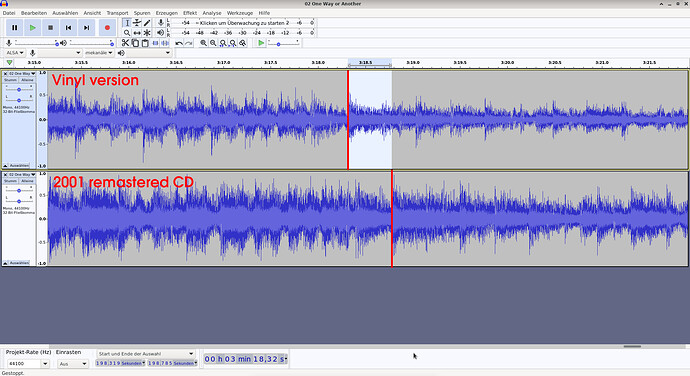In most cases the AcoustID returned from Scan (added to the tag) is the same as the AcoustID to which the sent fingerprint of the file is added. Exceptions were discussed here.
Here’s an interesting example of the possible range of matches:
One Way or Another is a recording with currently 35 enabled acoustIDs (I disabled numerous additional acoustIDs).
A recent Scan of the correctly tagged vinyl version file had this acoustID returned:
A submitted fingerprint (Submit AcoustIDs) is added to another acoustID: Track "34493f33-67d7-4a14-a4ab-c4b383dd0c09" | AcoustID
–
A curious fact: the same acoustID was returned for a 2001 remastered CD version (3 years ago):
Again, a fingerprint generated from this file is added to another AcoustID: Track "1151c4fb-d9d7-4874-b331-b1457bc678b6" | AcoustID
–
These versions play at a considerably different speed - fingerprints match between offset 1 and 3, shifting: Compare fingerprints #94405395 and #79717386 | AcoustID
Difference in Audacity - mono down-mix, synced at the beginning, difference towards the end is approx. 0.5 secs:
Conclusion: These fingerprints are not perfectly similar, but the similarity was enough to recognize the recording by a sufficiently matching fingerprint. Note, that the 2001 remastered CD’s acoustID was probably not available, when it was first scanned. A rescan returns the acoustID to which it submits. Only the vinyl version still gets a different acoustID on scan.
Remark on track length of a submitted fingerprint: my 2001 remastered CD version has a length of ~3:35 – the length of the fingerprint (on acoustid.org) is 3:37. However, my file’s fingerprint was considered to be the same pattern as an existing fingerprint with 2s more.
All these fingerprints are doubtlessly similar. All scans have found the correct recording and the release (of course, they were already correctly tagged)
